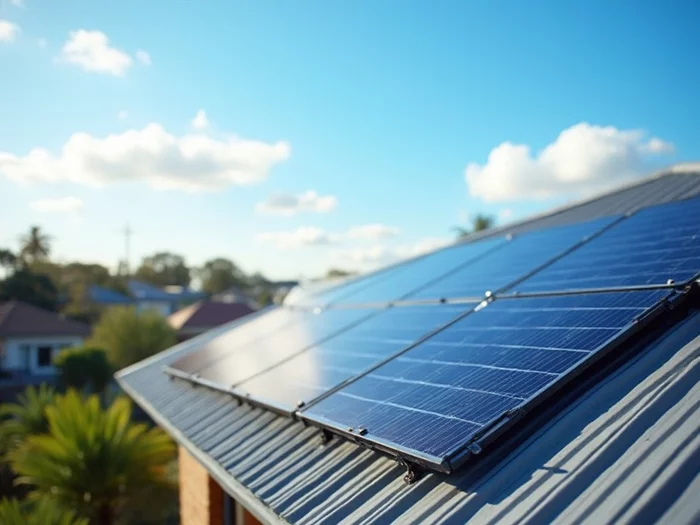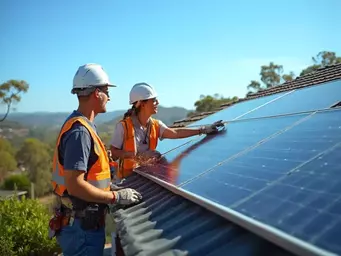Cost Influencers
- ● System Size: Matches household energy needs.
- ● Panel Quality: Budget vs. premium options.
- ● Installation Complexity: Local labor & permit costs.
- ● Inverter Technology: Different types influence investment.
Unlock expert insights on solar panel installation, energy savings, and government rebates for Australian homes and businesses. Join our community of informed solar enthusiasts!
Posted on: 2025-10-13
By: Evelyn Tran
As we look towards a future increasingly reliant on renewable energy, understanding the nuances of solar installation can be pivotal. What if I told you that embracing solar energy could drastically reduce your household expenses while also benefiting the environment? Let's explore this game-changing opportunity!
Understanding the factors that shape solar installation costs and the opportunities to reduce them is crucial for homeowners. The visual below highlights the primary influences and mechanisms for cost reduction in the Australian solar market.
As we step into 2025, understanding solar installation prices is crucial for Australian homeowners. Many of us are realizing the importance of renewable energy and its role in reducing our carbon footprint. Solar energy isn't just a trend; it's an essential investment for a sustainable future!
With rising energy costs, homeowners are looking for affordable solar solutions that can lead to long-term savings. Here at Longi Solar Solutions, we aim to empower you with the knowledge you need to make informed decisions about your solar journey. Let’s dive into why solar energy is becoming crucial for homeowners across Australia!
Solar energy provides a multitude of benefits, particularly for us Australians. First, it contributes to energy independence, reducing reliance on traditional power sources. Second, the environmental impact is undeniable; harnessing sunlight helps decrease greenhouse gas emissions and combat climate change.
At Longi Solar Solutions, I’ve seen firsthand how installing solar panels can transform energy expenses into savings for families. It's an exciting time to consider switching to solar energy!
Understanding the trends in solar installation costs helps us navigate the market effectively. As of 2025, the average costs for solar panel installations have seen a significant decline, making it a more accessible option for many homeowners. Factors such as economies of scale and advancements in technology have contributed to this positive trend. According to the National Renewable Energy Laboratory (NREL), solar system costs have consistently decreased, making solar power more affordable.
These trends suggest that if you’ve been contemplating solar energy, now is an excellent time to explore your options!
Renewable Energy Certificates (RECs) play a significant role in lowering the cost of solar installations. These certificates are issued for each megawatt-hour of renewable electricity generated, helping to create a financial incentive for homeowners. By participating in the REC market, you can offset a portion of your installation costs. The U.S. Department of Energy provides further insights into solar photovoltaic system cost benchmarks, highlighting how various incentives contribute to overall affordability.
By understanding how RECs function, you can position yourself to take advantage of these benefits, ultimately leading to a more affordable solar investment!
We want to know about your experience or thoughts on solar energy! Have you considered switching to solar power for your home? Share your perspective below:
As we look ahead to 2025, understanding the factors influencing solar installation prices is crucial for homeowners considering this transition. The combination of system size, panel quality, installation complexity, and inverter technology plays a significant role in determining the overall cost. But let’s also remember that government incentives and rebates can dramatically affect what you end up paying! The International Renewable Energy Agency (IRENA) consistently reports on how these elements impact global renewable power generation costs, providing a broader context for Australian trends.
Moreover, the role of government rebates, like the STC Rebate System, cannot be overstated. By staying informed about these factors, you can make smarter financial decisions that align with your energy goals and budget.
In summary, solar installation prices in Australia for 2025 will be influenced by various interconnected factors. It’s essential to consider both short-term expenses and long-term savings. Here are some key takeaways to help you in your decision-making process:
By understanding these elements, you’ll be better positioned to maximize your investment in solar energy and enjoy the benefits of reduced energy bills and increased sustainability.
Making informed choices when it comes to solar installation is key to ensuring you get the most out of your investment. At Longi Solar Solutions, we believe that education is empowerment! By understanding the nuances of solar technology and pricing, you can navigate the complexities of the market with confidence.
With the right information and support, transitioning to solar can be a smooth and rewarding experience. As your trusted partner, I’m here to help guide you every step of the way!
Once you’ve gathered all the necessary information, the next logical step is to contact professionals for quotes and installations. It’s essential to reach out to several companies to compare prices and services. At Longi Solar Solutions, we recommend considering the following when seeking quotes:
These steps will ensure that you’re not only getting the best price but also the best service possible!
Finally, staying informed about government incentives and energy policies can significantly impact your solar journey. The landscape of solar energy is always evolving, and keeping up with these changes will help you maximize your investment. Here’s how you can stay updated:
By remaining proactive, you can take full advantage of available opportunities and make the most of your solar investment!
Here is a quick recap of the important points discussed in the article:

 Ready to unlock the potential of solar energy for your home? Understanding the financial landscape o
Ready to unlock the potential of solar energy for your home? Understanding the financial landscape o
 As you contemplate the shift to solar energy, consider this: a comprehensive understanding of the co
As you contemplate the shift to solar energy, consider this: a comprehensive understanding of the co
 Choosing the right solar installer can significantly impact your renewable energy journey. Are you r
Choosing the right solar installer can significantly impact your renewable energy journey. Are you r